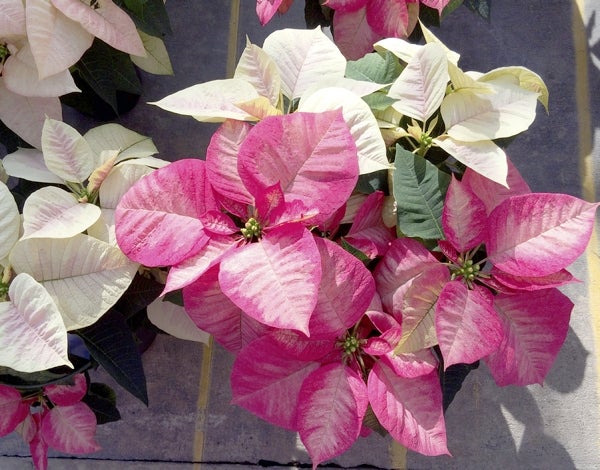Holiday plant care can maintain beauty for a long time
Published 12:00 am Friday, December 25, 2015

- Cooperative Extension Poinsettias are the most popular holiday plant, and now come in variety of colors.
By Amy-Lynn Albertson
Rowan County Extension Director
How long your holiday plants remain attractive depends on how well you care for them. Some of the most common holiday plants include poinsettia, Thanksgiving/Christmas cactus and amaryllis.
The care of the plants begins at the time of purchase. Poinsettias are the most popular holiday plant. Poinsettias are available in a tremendous variety of leaf or bract, colors, including red, white, marble, pink and combinations of these colors. Red poinsettias, however, still represent around 90 percent of the market.
When buying a poinsettia look at the bract size and number. Bracts should be large and extend over the lower green leaves. The number and size of bracts usually dictates the plant price. A premium quality poinsettia has at least six bracts or more.
Check the lower green leaves for insects like white flies; drooping leaves may indicate problems. The most important thing to look at when selecting a poinsettia is the green flower part (cyathia) in the center of the colored bracts. Plants that have large cyathia showing yellow pollen and sap will have the least amount of display life left. Plants with smaller cyathia, little to no pollen and no sap, will have the longest display life. A poinsettia should last for four to six weeks in the home.
Thanksgiving cactus and Christmas cactus are popular, fall- and winter-flowering houseplants native to Brazil, and are available in a wide variety of colors including red, rose, purple, lavender, peach, orange, cream and white.
These species grow as epiphytes among tree branches in shady rain forests, and their pendulous stems make them a great choice for hanging baskets. When grown under normal night-length conditions, Thanksgiving cacti normally flower near Thanksgiving, approximately a month before Christmas cacti bloom. Because of its bloom time, the Thanksgiving cactus is most predominately encountered for sale during the winter holiday season. Flowering can last seven to eight weeks if the plants are kept at 68 degrees.
The amaryllis is a bulb that can be enjoyed inside while it’s flowering and then planted outside in the spring or kept in a pot as a houseplant. The blooms of an amaryllis can be as large as 8-10 inches across, and come in a variety of colors from red, white, pink, salmon, red/white bicolor and more.
To help prolong the flower power of this plant, move it to a cooler location and out of direct sunlight. Amaryllis likes day temperatures in the 70s and night temperatures in the 60s. In the right environment, amaryllis blooms can last for a month.
The secret of successfully growing amaryllis is to keep the plants actively growing after they finish blooming. Remove the blossoms as soon as they fade to prevent seed formation by cutting the stem off just above the bulb. Place the plant in a sunny window until the threat of frost/freeze is over (April 15) and then you can plant your amaryllis outside in your landscape.
Here are some simple suggestions for maintaining your holiday plants. If your plant is wrapped with foil, either remove the foil or make holes in the foil so water can drain out. Keep it in bright light, but not direct sunlight and in cool temps away from drafts.
When watering your holiday plants the soil should be kept moist but not soggy. Roots will become damaged if they are allowed to dry out or water logged. As the flowers fade, remove them and clean up any damaged leaves.
For more information on holiday plants or other horticultural topics, please contact the Rowan County Extension Center at 704-216-8970 or rowan.ces.ncsu.edu.




